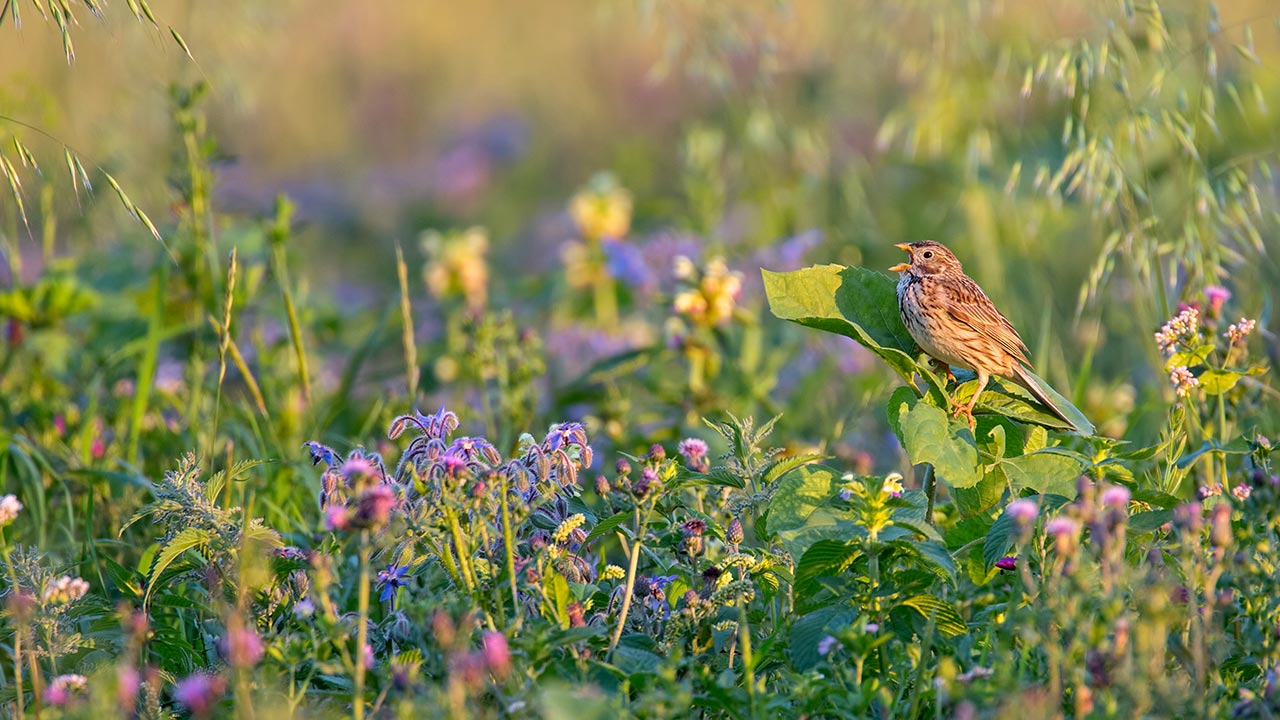Fallow land promotes bird diversity
A study shows how to most effectively create fallow land to strengthen biodiversity.

Fallow land in agricultural landscapes of medium complexity has the greatest benefit for diverse bird life. This is the result of a nine-year study by the Thünen Institute, the Dachverband Deutscher Avifaunisten and the University of Göttingen. The researchers had evaluated correlations between the proportion of fallow land and the occurrence of agricultural birds.
Landscape complexity as an important variable
Fallow land is generally considered beneficial for biodiversity and as a countermeasure to species loss in industrial agriculture. However, it was unclear which type of fallow land is particularly effective in which landscape context. With the help of the nationwide monitoring of common breeding birds and data from agricultural statistics, the project participants were now able to answer this question.
The complexity of the agricultural landscape proved to be a key factor. Experts understand this to mean the extent to which fields alternate with woody structures such as hedgerows or forest edges. The greatest benefit for bird life is provided by fallows established in agricultural landscapes with medium structural complexity. In Germany, this refers to areas where the average density of boundary lines between fields and wooded areas is 65 meters per hectare of agricultural land.
Restore more fallow land
"Our investigations enabled us to identify regions where fallow land should preferably be established in order to have the greatest effect," sums up study coordinator Sebastian Klimek from the Thünen Institute for Biodiversity. The consequence of this finding is expressed succinctly by his colleague Johannes Kamp from the University of Göttingen: "In order to halt declining population trends of agricultural birds nationwide, it is necessary to maintain a minimum proportion of fallow land in the agricultural landscape."
As a result of the Common Agricultural Policy, fallow land in the EU has declined sharply since the 2000s, and with it breeding and feeding opportunities for farmland birds. From 2015, the so-called greening of the revised Common Agricultural Policy led to a slight recovery, but without restoring the former proportion of fallow land in Germany. Since that year, the Common Agricultural Policy requires farms to set aside 4% of their arable land.
The project "Monitoring Biodiversity in Agricultural Landscapes" was funded by the German Federal Ministry of Food and Agriculture. The associated study was published in the Journal of Applied Ecology.
bl


